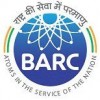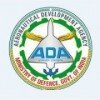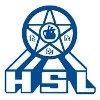Filter interviews by
Defence Research & Development Organisation Interview Questions, Process, and Tips
Defence Research & Development Organisation Interview Experiences
67 interviews found
I applied via Referral and was interviewed in Aug 2024. There were 3 interview rounds.
(2 Questions)
- Q1. What are the steps to create a chat bot in python
- Ans.
Creating a chat bot in Python involves several steps such as defining intents, training the model, and integrating with messaging platforms.
Define intents and entities for the chat bot using a natural language processing library like spaCy or NLTK.
Train the chat bot model using a machine learning framework like TensorFlow or PyTorch.
Integrate the chat bot with messaging platforms like Facebook Messenger or Slack using ...
- Q2. What are libraires are used for web automation
- Ans.
Some libraries used for web automation are Selenium, Puppeteer, and Playwright.
Selenium is a popular choice for automating web browsers across many platforms.
Puppeteer is a Node library which provides a high-level API to control Chrome or Chromium over the DevTools Protocol.
Playwright is a Node library for automating browsers, including Chromium, Firefox, and WebKit.
Write a python code to view the list of USB devices used in a system
(1 Question)
- Q1. How is your social media life?
- Ans.
My social media life is active and engaging, with a focus on networking and sharing professional insights.
I use platforms like LinkedIn and Twitter to connect with industry professionals and share relevant articles and research.
I participate in online forums and groups related to AI and ML to stay updated on the latest trends and developments.
I maintain a professional online presence by sharing my own projects and acco...
Interview Preparation Tips
- Python
- NLP
- Machine Learning
Skills evaluated in this interview
Ai Ml Engineer Interview Questions asked at other Companies
I was interviewed in Sep 2024.
(2 Questions)
- Q1. Which field will we focus more?
- Q2. What are the chances that I’ll select im your interview process?
GD should be in current market scenario topics, which will lead the following company for it’s future growth, development and profitability.
(1 Question)
- Q1. Major questions i got from DSA, Network Security and CyberSecurity.
It was quite good! I could solve major problems .
It was moderate and i could solve some coding problems.
Interview Preparation Tips
Intern Interview Questions asked at other Companies
(1 Question)
- Q1. Discussion about project
Software Engineer Interview Questions asked at other Companies
(1 Question)
- Q1. What are the different equations of thermodynamics ?
- Ans.
The different equations of thermodynamics describe the relationships between energy, heat, and work in a system.
The first law of thermodynamics: ΔU = Q - W, where ΔU is the change in internal energy, Q is heat added to the system, and W is work done by the system.
The second law of thermodynamics: ΔS ≥ 0, where ΔS is the change in entropy of a closed system.
The ideal gas law: PV = nRT, where P is pressure, V is volume, ...
Interview Preparation Tips
Research Intern Interview Questions asked at other Companies
Defence Research & Development Organisation interview questions for popular designations
To design a responsive website using react framework and implement ui using bootstrap and integrate api provided for real time updates
UI UX Developer Interview Questions asked at other Companies
Get interview-ready with Top Defence Research & Development Organisation Interview Questions
(5 Questions)
- Q1. Basics of thermodynamics like entropy of universe, Basics of SOM, Mechanics etc
- Q2. Past company experience
- Q3. Modelling related
- Q4. Future plans after jrf
- Ans.
I plan to pursue a PhD in my field of research and eventually work in academia or industry.
Continue research in my area of interest
Apply for PhD programs
Explore opportunities in academia or industry
Attend conferences and publish research papers
Network with professionals in the field
- Q5. Self introduction
Junior Researcher Interview Questions asked at other Companies
(1 Question)
- Q1. Basic electrical engineering questions and ai deep learning basics
Research Intern Interview Questions asked at other Companies
(2 Questions)
- Q1. Subjects of interest
- Q2. Previous projects
- Ans.
I have worked on various projects during my academic studies, including a marketing campaign for a local business and a research project on consumer behavior.
Developed a marketing campaign for a local business to increase brand awareness and customer engagement
Conducted research on consumer behavior to analyze purchasing patterns and preferences
Collaborated with a team to design and implement strategies for project suc
Internship Trainee Interview Questions asked at other Companies
(2 Questions)
- Q1. Why do you want to join drdo
- Ans.
I want to join DRDO to contribute towards national security and work on cutting-edge technology.
Passion for defense and security technology
Desire to work on innovative projects
Opportunity to make a meaningful impact
Excitement to be part of a prestigious organization
- Q2. What are your skills and experiences
- Ans.
I have strong communication skills, experience in project management, and proficiency in data analysis.
Strong communication skills - effectively communicate with team members and stakeholders
Experience in project management - successfully led a team to complete a project on time and within budget
Proficiency in data analysis - able to analyze large datasets and draw meaningful insights
Intern Interview Questions asked at other Companies
(1 Question)
- Q1. Work experience
Research Intern Interview Questions asked at other Companies
I applied via Walk-in and was interviewed in Jan 2024. There were 3 interview rounds.

(1 Question)
- Q1. Production handling and R&D support
(1 Question)
- Q1. Production handling
Foreman Interview Questions asked at other Companies
Top trending discussions






Defence Research & Development Organisation Interview FAQs
The duration of Defence Research & Development Organisation interview process can vary, but typically it takes about less than 2 weeks to complete.
Recently Viewed
Tell us how to improve this page.
Defence Research & Development Organisation Interviews By Designations
- Defence Research & Development Organisation Junior Research Fellow Interview Questions
- Defence Research & Development Organisation Intern Interview Questions
- Defence Research & Development Organisation Research Intern Interview Questions
- Defence Research & Development Organisation Design Engineer Interview Questions
- Defence Research & Development Organisation Senior Research Fellow Interview Questions
- Defence Research & Development Organisation Graduate Trainee Interview Questions
- Defence Research & Development Organisation Scientist Interview Questions
- Defence Research & Development Organisation Software Engineer Interview Questions
- Show more
Interview Questions for Popular Designations
- Junior Research Fellow Interview Questions
- Intern Interview Questions
- Research Intern Interview Questions
- Software Engineer Interview Questions
- Consultant Interview Questions
- Graduate Engineer Trainee (Get) Interview Questions
- Associate Software Engineer Interview Questions
- Test Engineer Interview Questions
- Show more
Defence Research & Development Organisation Interview Process
based on 56 interviews
Interview experience
Interview Questions from Similar Companies
Fast track your campus placements
Defence Research & Development Organisation Reviews and Ratings
based on 761 reviews
Rating in categories
|
Design Engineer
182
salaries
| ₹0 L/yr - ₹0 L/yr |
|
Junior Research Fellow
134
salaries
| ₹0 L/yr - ₹0 L/yr |
|
Project Engineer
126
salaries
| ₹0 L/yr - ₹0 L/yr |
|
Senior Research Fellow
117
salaries
| ₹0 L/yr - ₹0 L/yr |
|
Contract Engineer
105
salaries
| ₹0 L/yr - ₹0 L/yr |

BARC

Indian Space Research Organisation

Bharat Electronics

Hindustan Aeronautics
- Home >
- Interviews >
- Defence Research & Development Organisation Interview Questions

















